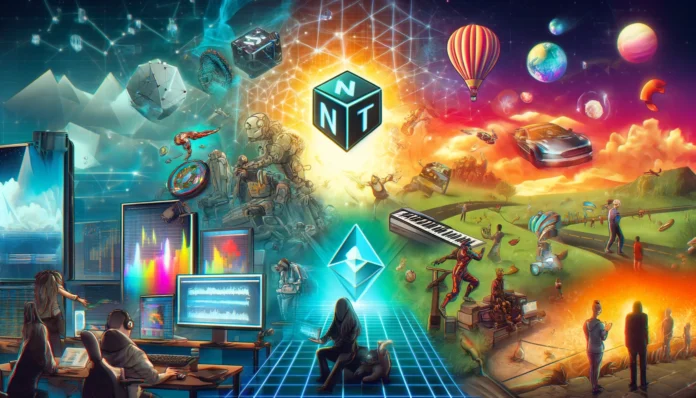In the digital era, few phenomena have captivated public attention like the rise of non-fungible tokens (NFTs). Bursting into mainstream consciousness in 2021, NFTs promised to revolutionize art, gaming, and even real estate by providing unique digital ownership verified through blockchain technology. However, as we progress through 2024, it’s essential to take stock of this once-hyped sector and examine its current state, ongoing developments, and future potential.
The Meteoric Rise
NFTs first gained widespread attention with high-profile sales such as Beeple’s “Everydays: The First 5000 Days,” which fetched a staggering $69 million at Christie’s auction house. This sale exemplified the NFT market’s explosive growth, attracting artists, celebrities, and investors eager to capitalize on the trend. Digital art became the poster child of the NFT boom, with platforms like OpenSea, Rarible, and Foundation emerging as marketplaces where creators could mint and sell their works.
The allure of NFTs extended beyond art. In gaming, NFTs offered the promise of true ownership of in-game assets, leading to the rise of play-to-earn games like Axie Infinity. The concept also seeped into virtual real estate, with platforms such as Decentraland and The Sandbox selling virtual land parcels for real-world prices.
Market Volatility and Skepticism
Despite the initial excitement, the NFT market has experienced significant volatility. The rapid influx of speculative investments led to market saturation, with countless projects and collections vying for attention. This oversupply, coupled with high-profile scams and environmental concerns about blockchain’s energy consumption, fueled skepticism.
The market correction in 2022 saw NFT prices plummet, leaving many to question the sustainability of the hype. Critics argued that NFTs were a bubble, destined to burst as quickly as they had inflated. This period of adjustment weeded out many speculative ventures, but it also paved the way for a more mature and sustainable market.
The Current Landscape
As of 2024, the NFT market has evolved considerably. While the initial frenzy has subsided, NFTs have found a steadier footing across various industries. The digital art market remains vibrant, but with more realistic pricing and greater emphasis on utility and community engagement. Artists and creators now focus on delivering additional value through experiences, memberships, and exclusive content for NFT holders.
Gaming continues to be a significant driver of NFT adoption. Major gaming companies are exploring blockchain integration, and the concept of digital ownership is becoming more accepted among gamers. Projects are increasingly focused on interoperability, allowing players to use their assets across multiple games and platforms.
Moreover, NFTs are making inroads into new sectors. In music, artists are using NFTs to release limited-edition albums and grant fans exclusive access to concerts. Fashion brands are experimenting with digital clothing and accessories, often tied to physical counterparts. Even the real estate market is exploring tokenization, enabling fractional ownership of properties through NFTs.
Challenges and Future Directions
Despite the progress, the NFT ecosystem faces ongoing challenges. Regulatory scrutiny is intensifying as governments seek to address concerns about money laundering, fraud, and consumer protection. Ensuring environmental sustainability remains a priority, with many projects transitioning to more eco-friendly blockchain solutions like Ethereum’s move to proof-of-stake.
Interoperability and scalability are critical issues that need resolution to fulfill the potential of NFTs. The development of decentralized platforms and protocols that allow seamless interaction between different blockchains will be crucial in the coming years.
Looking ahead, the future of NFTs seems intertwined with the broader Web3 movement, aiming to create a decentralized internet where users have greater control over their data and digital assets. As the technology matures, NFTs could play a pivotal role in this new digital economy, offering unique opportunities for ownership, creativity, and community building.
Conclusion
The NFT market has traversed a turbulent journey from its meteoric rise to a more tempered and promising present. While the initial hype may have waned, NFTs are far from a passing fad. They represent a transformative technology with the potential to reshape various industries. As we move forward, the focus will likely shift from speculative investments to practical applications, fostering a more sustainable and innovative ecosystem. Whether in art, gaming, or beyond, NFTs are poised to leave a lasting imprint on the digital landscape.





